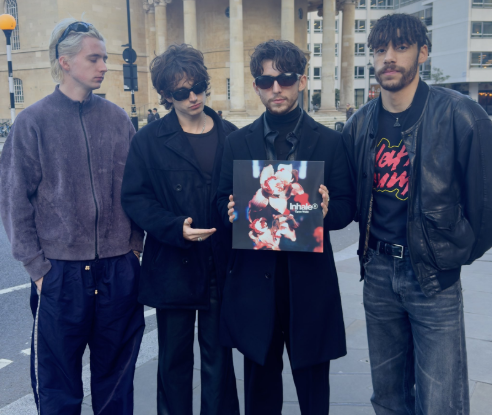I’m walking to my third period class dressed as I usually am. Black jacket, black jeans, and black band t-shirt, this day one with the image of my favorite metal group Slipknot on the front. But today is a little bit different. One of my classmates comes up to me and asks, “Why do you like that music? All they do is scream and cut themselves.” At first I brushed it off as just an ignorant remark to get me riled. But later it got me thinking, why are some forms of music constantly looked down upon? Or in more severe cases, scapegoated for acts of violence?
Just this year, Lamb of God vocalist Randy Blythe was arrested in the Czech Republic in association with the death of a fan at a concert. Allegedly, the fan ran up on stage, and then was pushed off by Blythe where he sustained serious head injuries and later died. Blythe was released on bail just last month, though he must make an appearance back in court at a later date. This is the most recent situation in a long list of violent acts associated with the metal community.
Violence and music in general have been intertwined with each other for decades. It all came to a head in 1985 when four women in Washington D.C. founded the Parents Music Resource Center. Among their many actions was creating the parental advisory warning that is printed on album covers to this day. They also came up with a list of 15 of the foulest songs at the time and christened them “the Filthy Fifteen.” By today’s standards, the songs on that list are considered tame and one can argue that violence in music has become so commonplace that it is idly glanced over. However, as the past has shown us, violence in lyrics can still cause harm to more than the ears.
In 1999, the Columbine High School massacre was blamed in part by many media outlets on metal and especially shock rocker Marilyn Manson for influencing the two students to carry out the act. This would later be deemed false as the two students were not fans of Manson or his music, but the stereotype of a heavy music fan in a black trench coat has stuck as an image of needless violence.
Woodstock 99, which took place the same year, was another watershed moment where an entire music scene was blamed for the actions of irresponsible fans. The festival originally meant to promote peace and love like the original Woodstock, but exploded into a seething cauldron of angst, which left the festival in a chaos of bonfires, vandalism and sexual assault cases. To many people who saw the coverage live, fans of the music were little more than violent hooligans.
However, violent actions of some do not mean the entire group of followers is responsible. Fans of the metal genre have proven to be one of the most loyal and passionate fan bases and the vast majority condemn acts of violence. Metal, while being stylistically different than most forms of music, shares similarities with music that has also been blamed for causing violent acts. Rap music has caused controversy for the last two decades with lyrics offending everyone from the police to the gay and lesbian alliance. Even country music, to some people one of the most wholesome forms of music, has not been without its share of questionable actions, from lyrics about getting high to the Dixie Chicks bad mouthing George W. Bush. No matter what kind of music plays, it is always liable to cause offense to one or more groups if taken in the wrong context.
This does not fully excuse the fact that some fans can exploit metal and use it as the reason they committed downright stupid and immoral acts. If someone says that “a song made me do it,” or say they did something because an entertainer of any kind told you to, it not only brings the fans down, it brings the whole genre down as well. And if they are willing to throw the music they “love” under the bus in such a shameless way, they are not a true fan.
Blaming metal and other forms of music for causing people to commit violent acts is easy because of the mere lyrical context of a song. However, many overlook the fact that not all metal heads are trench coat wearing, devil worshiping, homicidal maniacs. It’s true that at times the lyrical substance of metal can be just as violent as the firing of a gun. The main thing to remember though, is the people who decide to fire that gun are not the voice of the genre.












